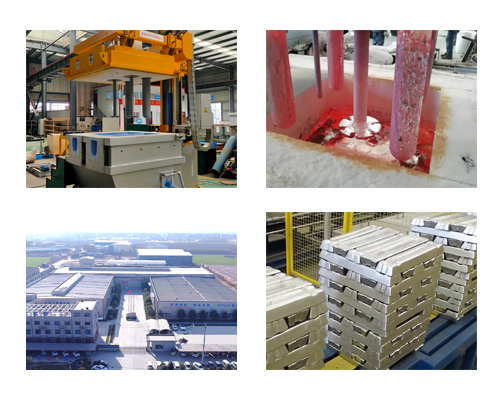The aluminium melt degassing system is the last process to reduce the hydrogen content. Its degassing efficiency and degassing effect are very important. The online degassing equipment in continuous casting and rolling adopts the rotating rotor degassing method.
In the melting and casting workshop, the hydrogen content and non-metallic inclusions of the molten aluminum alloy will seriously affect the quality of the castings. Usually during the condensation process, as the solubility of hydrogen decreases, hydrogen and non-metallic inclusions enter the crystallizer, which will cause white spots and pinholes on the surface of the sheet and foil during the subsequent rolling process. The mechanical properties of the material are reduced, and the product is eventually scrapped. Therefore, the aluminum alloy melt must be degassed and purified.
Floatation method is currently the most widely used method of degassing and purifying aluminium melt. The principle is to pass an inert gas or an active gas insoluble in the molten aluminum into the molten aluminum, or add a chloride salt to react with the molten aluminum to generate a gas, which generates a large number of escaped bubbles in the molten aluminum.
The hydrogen atoms dissolved in the molten aluminum migrate to the surface of the purification bubbles, are adsorbed on the surface of the bubbles, form hydrides into the hydrogen bubbles, and finally escape the kinetic process of the molten aluminum as the bubbles rise, completing the degassing and purification of the molten aluminum.
The rotating rotor degassing method can give full play to the advantages of the bubble floatation method for hydrogen removal. The key is that the liquid forms a turbulent flow under the strong action of the nozzle, and the bubbles are broken and uniformly dispersed under the action of the nozzle and the turbulent flow.
Because the rotating rotor degassing method can make the bubble diameter very small, the bubble’s tumbling effect on the liquid surface becomes very small, so that the air flow can be relatively increased. To obtain high degassing efficiency, a certain air flow must be guaranteed. Air flow is usually the main factor influencing the degassing effect of bubble floatation. Under the same conditions, the increase of gas flow will increase the specific surface area of gas-liquid action.
Due to the stirring effect of the rotating rotor inside the molten aluminum, the molten aluminum is in a moving state, which increases the movement speed of the bubbles in the molten aluminum, which is beneficial to improve the mass transfer capacity of the molten aluminum.
Due to the non-straight upward movement of the bubbles in the molten aluminum, the residence time of the bubbles in the molten aluminum is relatively long, that is, the dehydrogenation time of the bubble action is increased, so that the role of the bubble dehydrogenation can be fully exerted
The bubbles are uniformly distributed in the molten aluminum, which can reduce the diffusion distance of the hydrogen atoms in the molten aluminum to the bubbles, so that the diffusion process in the entire molten pool is strengthened, and the mass transfer conditions are effectively improved.

